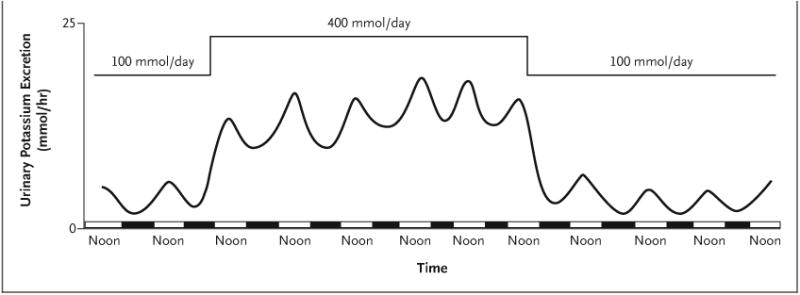Figure 3. Circadian Rhythm of Urinary Potassium Excretion in Humans during Two Levels of Potassium Intake.

Shown is the approximate hourly rate of urinary potassium excretion (based on urine collections every 6 hours) in multiple patients receiving four identical meals every 6 hours, with a normal amount of potassium (100 mmol per day) for the first 2 days, a high-potassium diet (400 mmol per day) for the next 6 days, and a normal amount of potassium for the next 4 days. Rapid renal potassium adaptation occurs in response to either an increase or a decrease in potassium intake. The hourly rate of potassium excretion over a 24-hour period varies from noon, when the largest rate of potassium excretion typically occurs (midpoint of the white bar on the x axis), to midnight, when it is typically the least (midpoint of the black bar). This circadian variation is approximately 40% in persons consuming a high-potassium diet and by approximately 300% in persons consuming a normal level of potassium. This circadian rhythm occurs despite evenly spaced meals every 6 hours during a 24-hour period. Data are adapted from Rabelink et al.23
